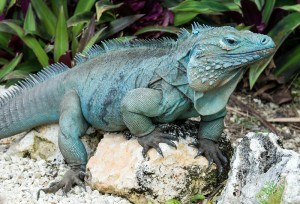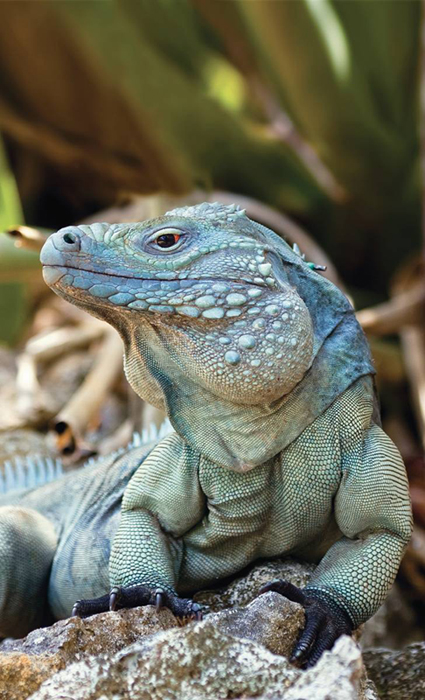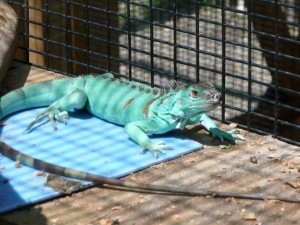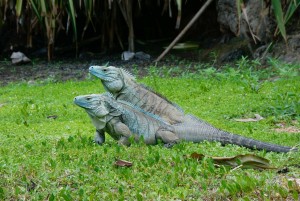 The true Blue Iguana is also know as the Grand Cayman Iguana. I say “true” because there is also the Axanthic Blue Iguana which is a morph which we will discuss later.
The true Blue Iguana is also know as the Grand Cayman Iguana. I say “true” because there is also the Axanthic Blue Iguana which is a morph which we will discuss later.
The grand daddy, Grand Cayman Blue Iguana is actually an endangered species but in the last 10 years or so has made a surprisingly large comeback. From only 10-25 left in the wild in 2002 to nearly 750 by 2013.
This type of Iguana, in the wild is exclusive to the Grand Cayman island. This Blue Iguana is one of the longest living types of lizards anywhere on the planet. They can live to be as old as 69! So far the oldest recorded one was 67 years old!
Where Do Blue Iguana Live on the Island?
When it comes to the habitat for these iguana they usually like to live in a very sunlit area that has plenty of rocks for them to bask on.
You can also find them by the shore because during the breeding months from April to July the female iguana digs out holes in the sand to lay her eggs.
The nest they dig will hold anywhere from one to twenty two eggs, depending on the size and age of the female.
One other location on the island you will find these animals would be in open dry forests which provide basking areas as well as plenty of things to eat.
Blue Iguana Diet
These iguana like others, are herbivores, meaning they eat a plant based diet. They will eat the native plants, flowers and even the fruit. Most iguanas such as the Green and the Rhinoceros Iguana have the same diet. In some cases, in the wild these iguana will eat other animal matter making some of them omnivores.
Grand Cayman Iguana Overview
 When it comes to these iguana the females tend to live a life by themselves and will protect their small boundaries with acts and displays of aggression. The only time they interact with the males is during the breeding season (April).
When it comes to these iguana the females tend to live a life by themselves and will protect their small boundaries with acts and displays of aggression. The only time they interact with the males is during the breeding season (April).
The color of these animals is actually a gray color with a blue overtone. The male tends to stay more on the side of gray but the female will be more blue and show her colors even more when it’s time to breed. Naturally showing her colors will help her to attract a mate.
These iguana are heavy bodied animals and if you’re thinking about owning one as a pet be prepared to offer lots of food and a very large enclosure.
If you want to keep them as a pet its a good idea to build a strong enclosure as these animals can be powerful and escape.
You will also need to provide strong basking lamps to help keep their thick body stay warm.
You can expect the full grown size of this iguana to be around 3 feet, including their tale and they can weigh as anywhere from 13 to 22 pounds.
The Other Blue Iguana
When it comes to a true looking blue Iguana we have to talk about the Axanthic Blue. This animal is a widely popular color morph iguana.
 With this animal you can expect bright blue colors that make it stand out from the crowd. The amount of blue in these morphs can vary depending on where they come from.
With this animal you can expect bright blue colors that make it stand out from the crowd. The amount of blue in these morphs can vary depending on where they come from.
You can find these animals coming from a farm bred environment as there color has been made with genetic modification.
Today, breeders are cross breeding different morphs to get all kinds of colors of iguana which we have never seen before.
These blue iguana, despite their color are much like the common green iguana. All of the attributes of that animal as far as diet and care remain the same.
As a reminder, make sure you’re taming your new iguana so they can live a happy and healthy life with their new human.



